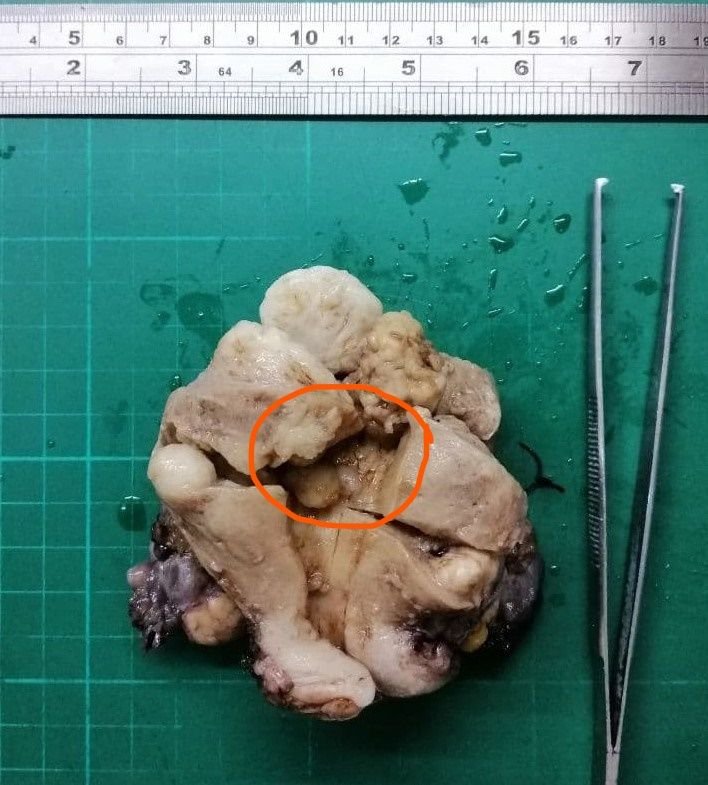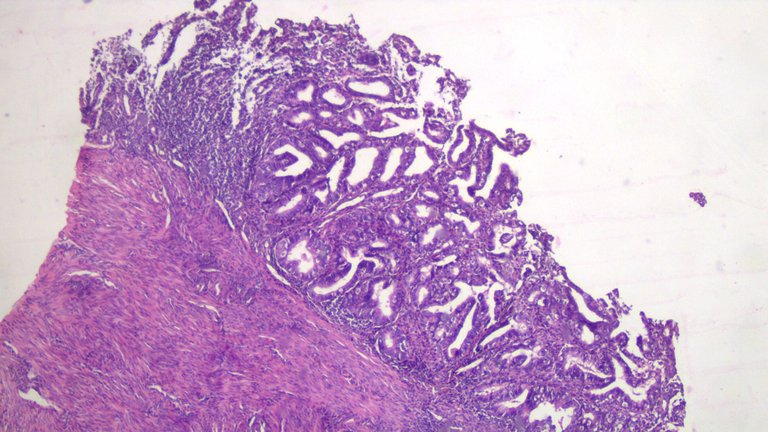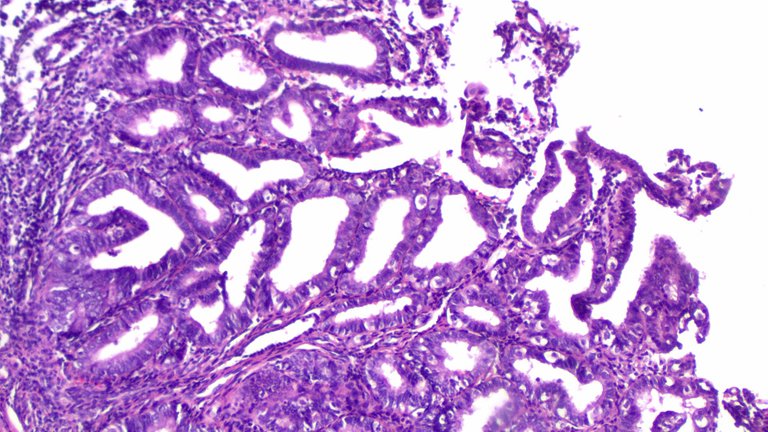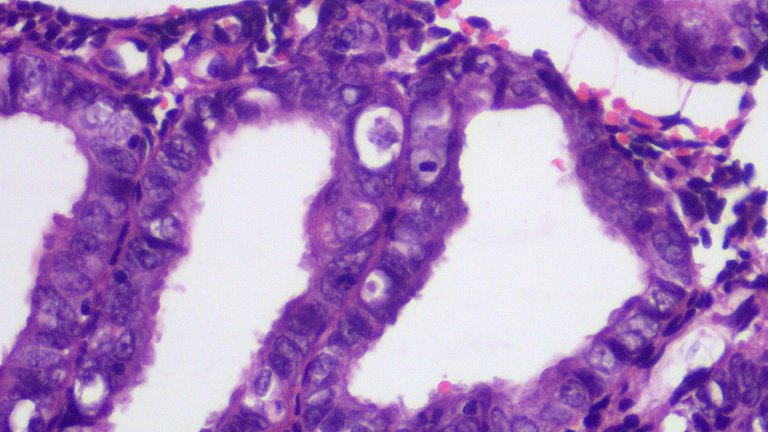Endometrial Intraepithelial Neoplasms
I’m not going to go into extensive detail about this stuff because there is plenty of other literature available online that could explain this subject better. Here’s a total hysterectomy with bilateral salpingooophorectomy specimen (removal of the uterus, cervix, both ovaries and fallopian tubes.) Though the ovaries and fallopian tubes here are short and bent backwards making it difficult to appreciate the view.

Grossly, it’s difficult to tell between a secretory phase endometrium where the lining is thickened versus endometrial intraepithelial neoplasms or endometrial carcinomas. But if I knew the specimen came from a women during their menopause, I would assume with confidence that this is probably malignant. If you see some round nodules, this patient also had multiple myoma.
Occasionally, these proliferations can be overlooked as secretory phase endometrium and vice versa especially in the child bearing age during ultrasound.
Here is the microscopic view of the lesion. Note that this isn’t from the same patient and I’m just sharing what you’d likely see from a focus of EIN.
Scanner View

Low power view

High power view

There is a small focus of glands with bizarre looking cells.
If I was treating a random specimen as benign, I’d get 4 sections of the endomyometrium. But if I am suspecting malignancy, I’d sample extensively. It’s a drag to reopen the specimen again and process additional slides for both you and the patient waiting for the result.
The clinical significance here is that these lesions can progress to full blown endometrial carcinoma which is another story to cover along with the treatment involved. The surgical management here is total hysterectomy (removal of the uterus and other organs like the ovaries) but that depends whether the patient would still desire pregnancy, their age, and feasibility of other therapies.
If you made it this far reading, thank you for your time.
Posted with STEMGeeks
Those are very weird looking cells
This one is a full blown endometrial carcinoma. The one on the post is a small focus that has yet to spread and transform other parts.
Edit: Meant as a reply to @nikv